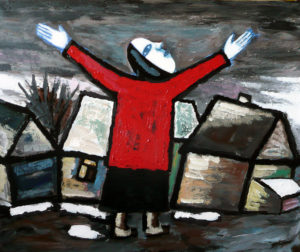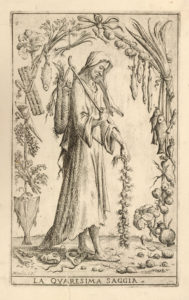It’s a bit sobering to think that Carnevale, at this time last year, was probably the last large gathering of people on a grand scale on this planet since February of 2020. Health concerns keep us keeping our distance. This year’s Carnevale festivities in Italy have been much more subdued… probably just as they were in times of plague in ages past.
Carnevale, or Carnival, began on the 30th of January this year in Venice. In English speaking countries, the season is better known as Shrovetide: the time of merry making before Lent begins. And Shrove Tuesday is today: the very last of it, capping off the celebration. Tomorrow will bring Ash Wednesday and a decidedly more solemn time: Lent, forty days of fasting and penance and reflection. Which is perhaps something we need every now and then. Certainly once a year, it was thought, and why not now, when the larders were getting empty. Back in the days when food was not as plentiful and easily procured as it is now, Lent was not just a season in the church calendar; it was a crucial time of fasting to help get everyone through until fresh food could be gathered again in the spring.
There are many traditions in foodways for Shrove Tuesday, known also as Mardi Gras. I’m not so crazy about the King Cakes that are in bakeries and grocery stores this time of year––they’re a bit too sweet for my tastes, with all that purple and green and yellow sugar. But the Polish bakeries will have pączki today, a rich filled doughnut, and the Swedish bakeries will have cream filled buns called semla. If they’re doing things right they’ll be selling them today but definitely not tomorrow and not again until next Shrovetide. In Germany, it is Fasnacht, and folks will be making doughnuts for the occasion this night (nacht) before the fast.
Seth and I, we’ll be making pancakes for our supper, and that is an old delicious tradition, one designed for times when Lent was much more restrictive than it is now. Nowadays all that the church asks of you is to pass up on meat on Fridays, but in ages past, folks had to give up meat for all forty days, and also eggs and all kinds of things we take for granted now. Making pancakes for supper on Shrove Tuesday was a way to use up all the eggs, all the milk, and all the sugar before the next day’s dawning brought Lent. We eat our pancakes with festivity and celebration. (Pancakes for supper? Of course they’ll be eaten with festivity and celebration!)
In the morning we awake to Ash Wednesday. I think a lot of us will choose to stay home this year, but typically, the churches are open, and if we have it in us, we go, and we approach that altar to have ashes smeared on our foreheads with the spoken reminder: Remember man that thou are dust and to dust you shall return. Something we’ve pondered, in one way or another, most all of this past circle around the sun. We are made of the stuff of this earth and we shall return to it. But the stuff of this earth is made of the stuff of the stars, too, and that is something greater to ponder. If nothing else, these forty days that follow tonight’s pancake supper will hopefully remind us that life is short, and we would do well to live the time we have with compassion and kindness for our fellow human beings (and all sentient beings, as Seth’s mom says), and to love each day, and, as we like to say here, to live the ceremony of each day, too.
Image: “Shrovetide,” a painting by Igor Novikov, 2013. No pancakes or semla or pączki to be found in the picture, but it’s ok; I do love the painting. Used with gratitude through Creative Commons via Wikimedia Commons.
MASK UP SALE! We’ve begun a brand new sale at Convivio Bookworks today! Buy any four or more of our beautiful triple layer embroidered face masks and you’ll automatically save 24% plus free shipping! It’s practically like getting one mask free (and all of them shipped to you for free, too). And if you need us to ship to destinations outside the US, email us first and we can make arrangements to ship for just $1 per mask. These triple layer masks are made by an extended family of artisans in Chiapas, Mexico, who truly appreciate every sale. So please throw a little transactional support their way if you can, while helping to keep yourself and those around you safe so we can gather again someday without thinking twice about it. We’re calling this one the Mask Up Sale. Click here to start shopping!
Click on the picture to see a full size version of it! The masks pictured here are the floral ones, but we also have other designs featuring calaveras, Frida Kahlo, Maria Bonita, Our Lady of Guadalupe, sugar skulls, Otomi-inspired flora and fauna, mandalas, and maybe even another one or two that I can’t remember off the top of my head.


